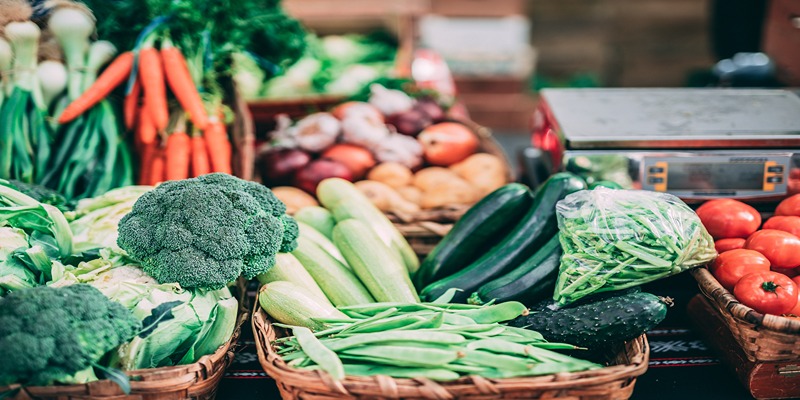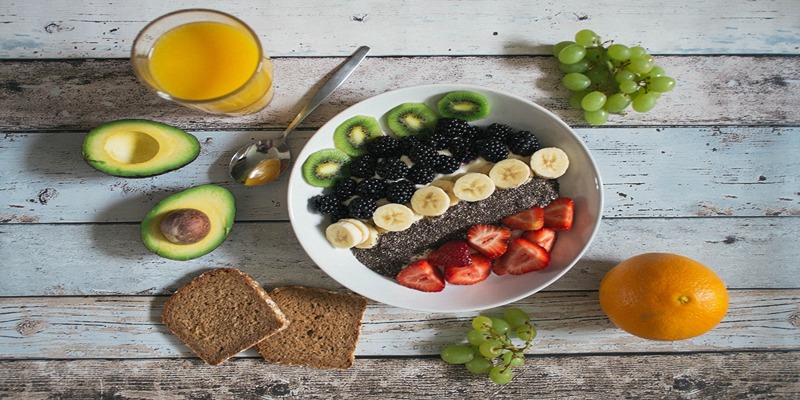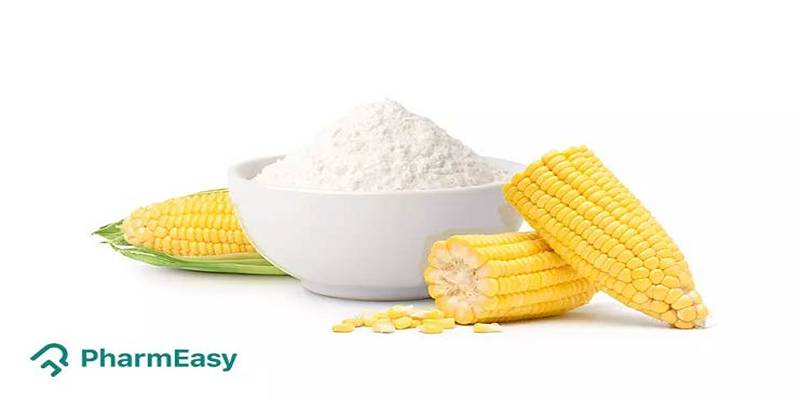Getting enough fiber in your diet is essential for protecting against several common chronic diseases and promoting digestive health. Many Americans still don't eat nearly enough fiber despite the clear link between high-fiber diets and several health advantages, such as longer lives, lower rates of heart disease and cancer, and lower rates of obesity. Fortunately, there is a wide variety of tasty foods that are also high in fiber and may meet these needs. This article explains why fiber is so important to health and lists the best foods that are rich in fiber.

High-Fiber Foods
Popcorn
Popcorn has one gram of fiber per cup, and eating it unbuttered is the healthiest option. As a whole grain, it's a great choice for snacking since it satisfies hunger pangs while also providing extra fiber.
Avocados
Avocados are a great source of fiber and may be added to a wide variety of foods, including toast, salads, main meals, and eggs. With a considerable 10 grams of fiber in every cup, their contribution to recipes like guacamole is noteworthy, complementing their well-known beneficial fats.
Berries
Berries, already lauded for their anti-oxidant qualities, also have a high fiber content. Frozen, unsweetened blueberries have the same amount of fiber as fresh blueberries, which is roughly 4 grams per cup. Blackberries, strawberries, and raspberries, among others, are naturally low in calories and have good fiber content.
Broccoli
Although it's true that broccoli is high in fiber, the advantages of this vegetable go well beyond just one aspect. It's a member of the Brassica plant family, which also includes cauliflower, cabbage, and kale, and it provides a wide range of beneficial elements. The 5 grams of fiber per cup contribute to healthier flora in the digestive tract, as shown by scientific studies.
Beans
Beans, especially lentils and edamame, are an easy approach to integrate fiber into meals via soups, stews, salads, and even as snacks. The fiber content of only half a cup of shelled edamame is 9 grams. These beans are a great source of plant-based protein and are increasingly being used into baked goods for a more nutritious option.
Nuts
Sunflower seeds and almonds, for example, include more than 3 grams of fiber per serving in addition to their protein and healthy fat content. Raw or dry-roasted kinds are preferable over oil-cooked ones because they help you get the daily fiber intake advised by the FDA. Nut butters are an excellent source of fiber.
Potatoes
Sweet, red, purple, and white potatoes, as well as other varieties, are all great fiber sources, with even a tiny potato providing over 3 grams. Despite its reputation for being unhealthy when eaten in unhealthy ways like fries and chips, potatoes provide many advantages when prepared sensibly.
Dried Fruits
The high fiber content of dried fruits like figs, prunes, and dates makes them an excellent choice for combating periodic constipation. They help with bowel movements because of the natural sorbitol they contain, but eating too many of them might cause stomach problems.
Apples
While eating an apple a day probably won't prevent medical problems, it will increase your fiber consumption by around 4 grams. You may also get that delicious crunch from an apple.
Whole Grains
Dietary fiber may be found in whole grains such the bread, pasta, rice, and oats that are made from 100% whole wheat. In order to be considered a true whole grain, the Food and Drug Administration requires that whole grains be the very first item on the label.

Fiber Benefits for Health
Healthy Weight Loss
A 2019 research published in The Journal of Nutrition shows that increasing one's intake of dietary fiber may help in weight reduction. The participants followed a calorie-restricted diet and were encouraged to increase their fiber consumption; they also exercised several times each week. The results showed that weight loss was similar across diets, and it was mostly due to the higher fiber intake. This corresponds with past results showing fiber helps weight reduction, since it promotes satiety and fullness.
Weight Control
Although further investigation is needed, a study published in Frontiers in Nutrition in 2023 found a correlation between a high fiber diet and body fat percentage. Those who consumed the most fiber after losing weight were better able to keep the weight off.
Lower Type 2 Diabetes Risk
A research published in 2020 in the Journal of Diabetes Investigation found that those who ate more fiber had a lower chance of developing type 2 diabetes. As a result of fiber's beneficial effects on blood glucose, gut health, and inflammation reduction, it was suggested that consuming both soluble and insoluble fiber combined provides superior diabetes prevention.
Lower Odds of Heart Disease
Researchers in 2022 discovered that the more fiber you eat, the less likely you are to get cardiovascular disease. This protective benefit is thought to be due, in part, to the anti-inflammatory characteristics of dietary fiber and the function of soluble fiber in lowering cholesterol absorption, both of which are explored in reviews published in 2023 in Advances in Nutrition and in 2022 in JAMA Network Open.
Increased Beneficial Gut Bacteria
An analysis published in Animal Nutrition in 2022 found that eating fiber improved gut microbiota health. Consistent fiber consumption immediately influences gut flora, with changes evident within days, according to University of Illinois' Kelly Swanson, Ph.D. However, decreasing intake may lead to unfavorable bacterial changes and increased inflammation, so consistent fiber consumption is important for permanent effects.
Daily Fiber Intake
Between 14 and 31 grams of fiber per day, again depending on age and gender, is recommended for children aged 1 to 18. Greater ingestion of fiber is associated with a decreased risk of chronic illness worldwide.
The importance of fiber in the digestive process is sometimes overlooked in favor of better-known minerals like vitamin D and calcium. A healthy digestive system relies on a diet high in fiber, which also has many other health benefits such as assisting with weight control and encouraging a healthy balance of microorganisms in the digestive tract.
Many Americans don't get nearly enough fiber in their diets, since the typical American only consumes approximately 16 grams per day. This page discusses the many advantages of fiber, where to get it, the possible side effects of eating too much fiber, and much more.
Conclusion
The significance that fiber plays in one's overall health is crucial and sometimes overlooked. Adults usually need 28 grams of fiber daily, with particular amounts for children varied by age and gender. The typical American diet lacks the necessary amount of fiber despite the importance of fiber for digestion, weight control, and gut health. Improved health and wellbeing may be achieved by learning about the significance of fiber, including it in our diets via a variety of food sources, and keeping track of how much we consume of it.







